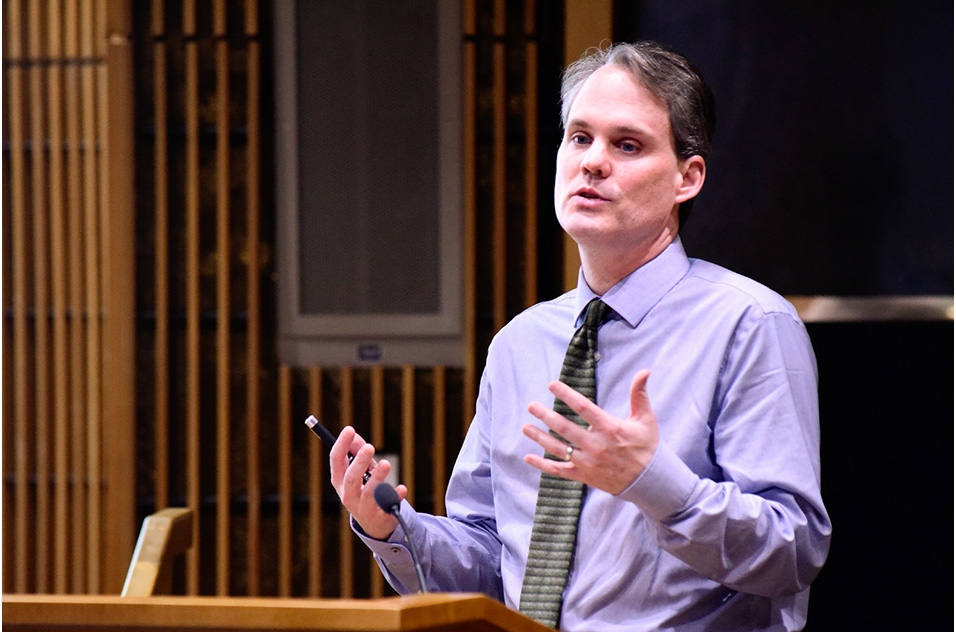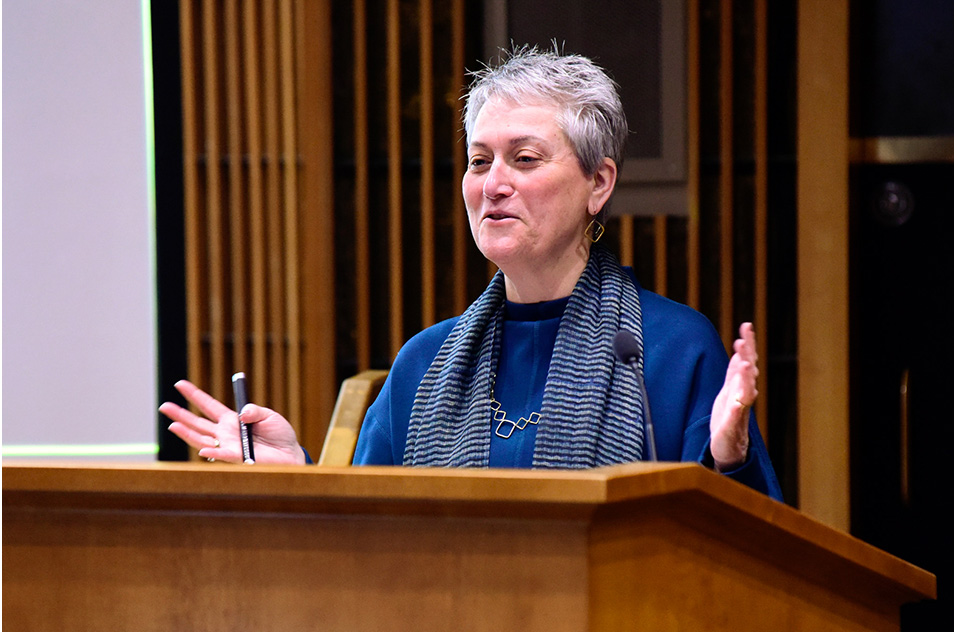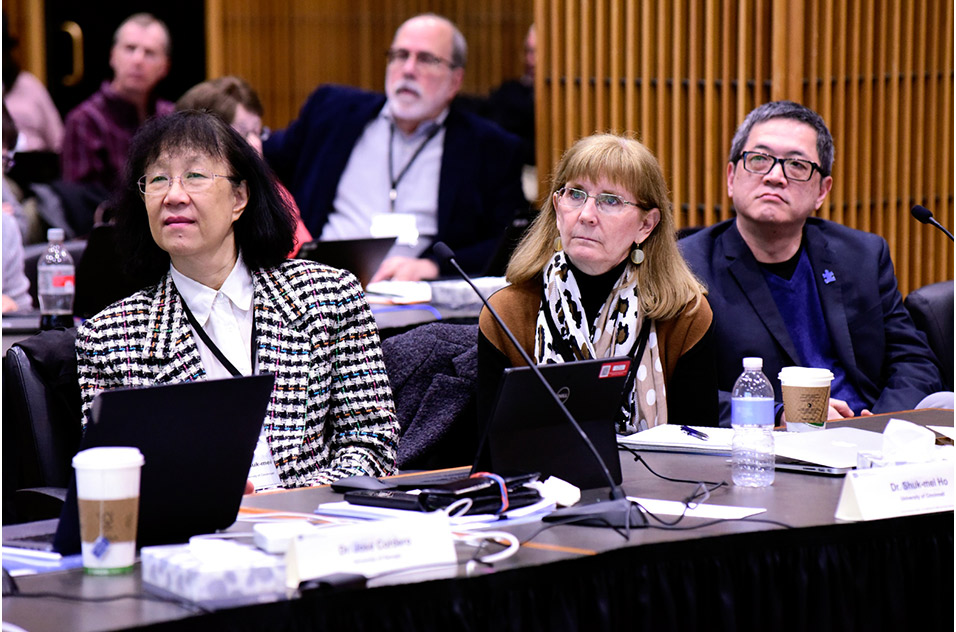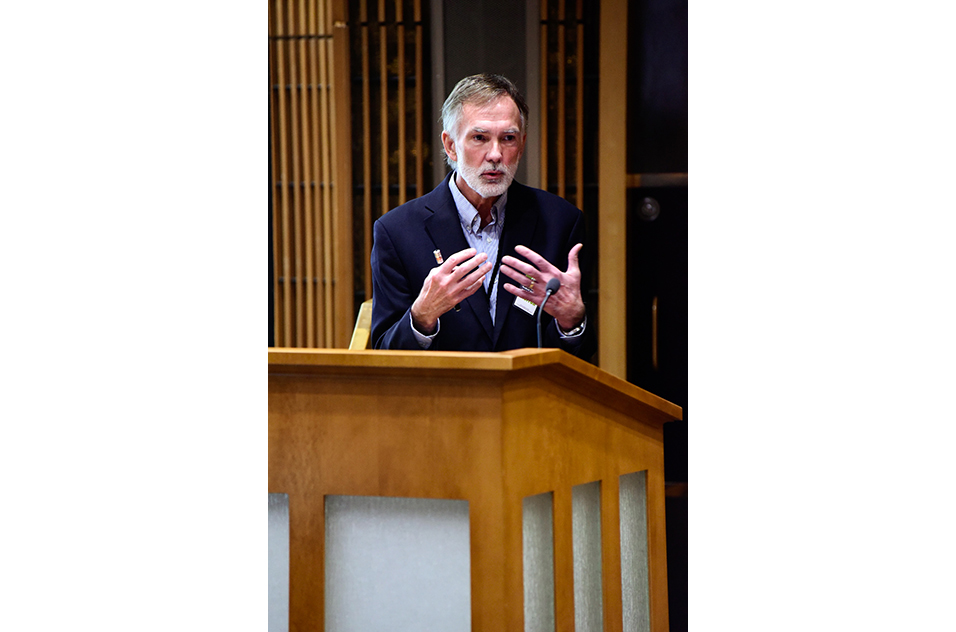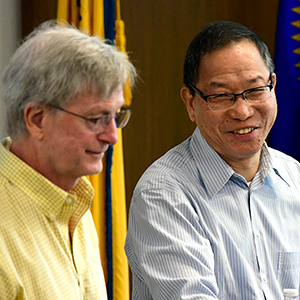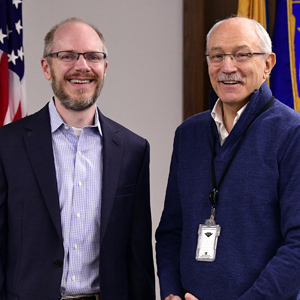At the Feb. 20-21 meeting of the National Advisory Environmental Health Sciences Council (NAEHSC), members supported renewal of funds for undergraduate research. They also discussed updates on children’s health research, strategies to meet the needs of cutting-edge data science, and other topics.
Cohorts report
NIEHS and National Toxicology Program Director Linda Birnbaum, Ph.D., started the meeting with a refresher on the substantial investment NIEHS has made in environmental epidemiology cohort studies, which are long-term research projects that enroll a large number of individuals. She described the challenges involved in maintaining a cohort for decades, particularly when grants must be frequently renewed. “We’re looking to find a sustainable model to ensure the continuity of data collection and follow-up of subjects during key milestones,” she explained.
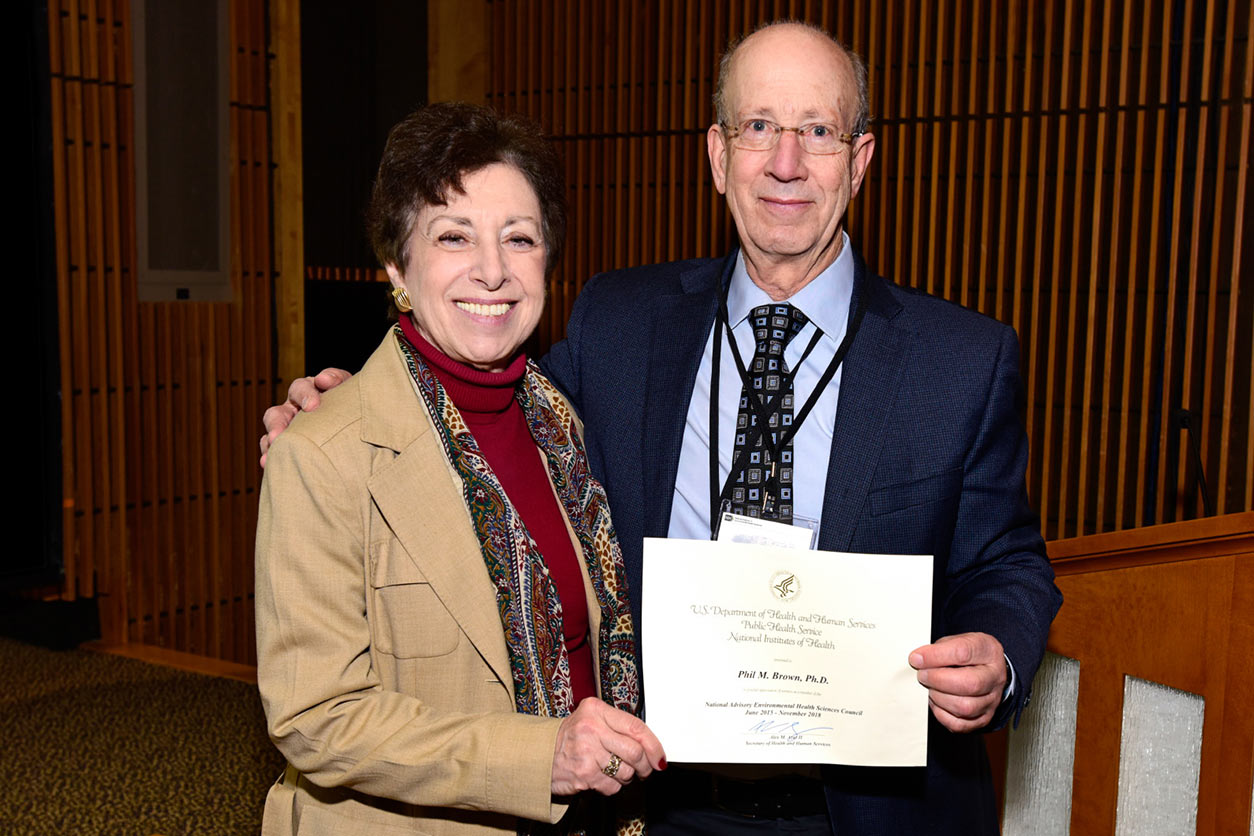 Birnbaum presented retiring council member Phil Brown, Ph.D., from Northeastern University, with a certificate of appreciation for his service. (Photo courtesy of Steve McCaw)
Birnbaum presented retiring council member Phil Brown, Ph.D., from Northeastern University, with a certificate of appreciation for his service. (Photo courtesy of Steve McCaw)Reaching UP again
Recruiting the next generation of environmental health scientists and improving diversity in the field are goals of the 2018-2023 NIEHS Strategic Plan. Health Specialist Astrid Haugen asked the council to renew funding for a program that addresses those needs.
The Undergraduate Research Education Program (UP) to Enhance Diversity in the Environmental Health Sciences, led by Michael Humble, Ph.D., began helping students gain hands-on experience with research activities in 2015. The council voted unanimously to approve renewal of the program.
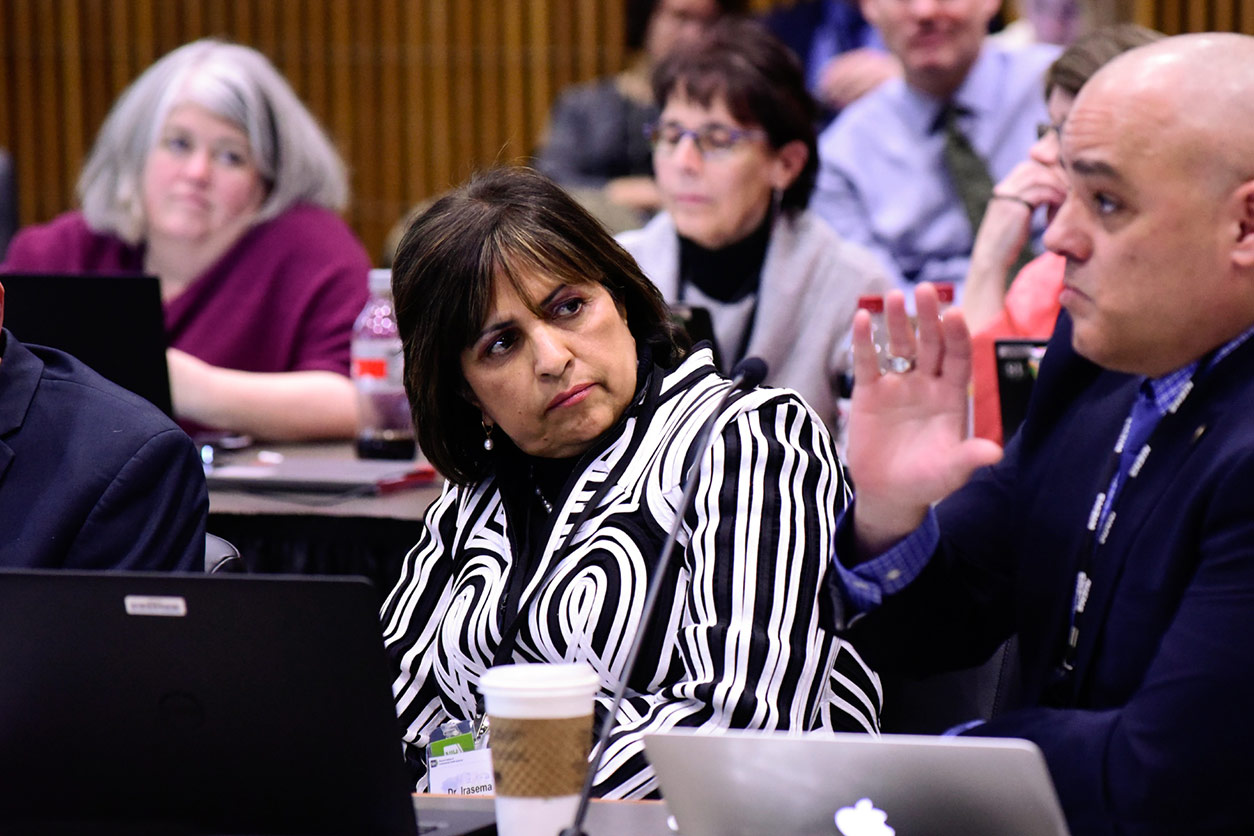 Council member Jose Manautou, Ph.D., from the University of Connecticut, right, and Irasema Coronado, Ph.D., from the University of Texas at El Paso, suggested using social media to measure outcomes and maintain contact with students in the UP program. (Photo courtesy of Steve McCaw)
Council member Jose Manautou, Ph.D., from the University of Connecticut, right, and Irasema Coronado, Ph.D., from the University of Texas at El Paso, suggested using social media to measure outcomes and maintain contact with students in the UP program. (Photo courtesy of Steve McCaw)All about the kids
Kimberly Gray, Ph.D., NIEHS program director for children’s environmental health, updated the council on the institute’s investments in children’s health research. Among the advances and programs she highlighted were the NIEHS/EPA Children’s Environmental Health and Disease Prevention Research Centers, a nationwide collaborative program that began in 1998
Researchers at the centers study the whole range of environmental health sciences, such as the topics below.
- Early life exposures that lead to such adverse health outcomes in children as autism, cognitive dysfunction, ADHD, asthma, diabetes, and others.
- Contaminants, such as metals, endocrine disruptors, and other pollutants in water, air, food, and consumer products, in both rural and urban settings.
- The microbiome, mitochondrial function, placental epigenetics, immune dysregulation, and other new research areas.
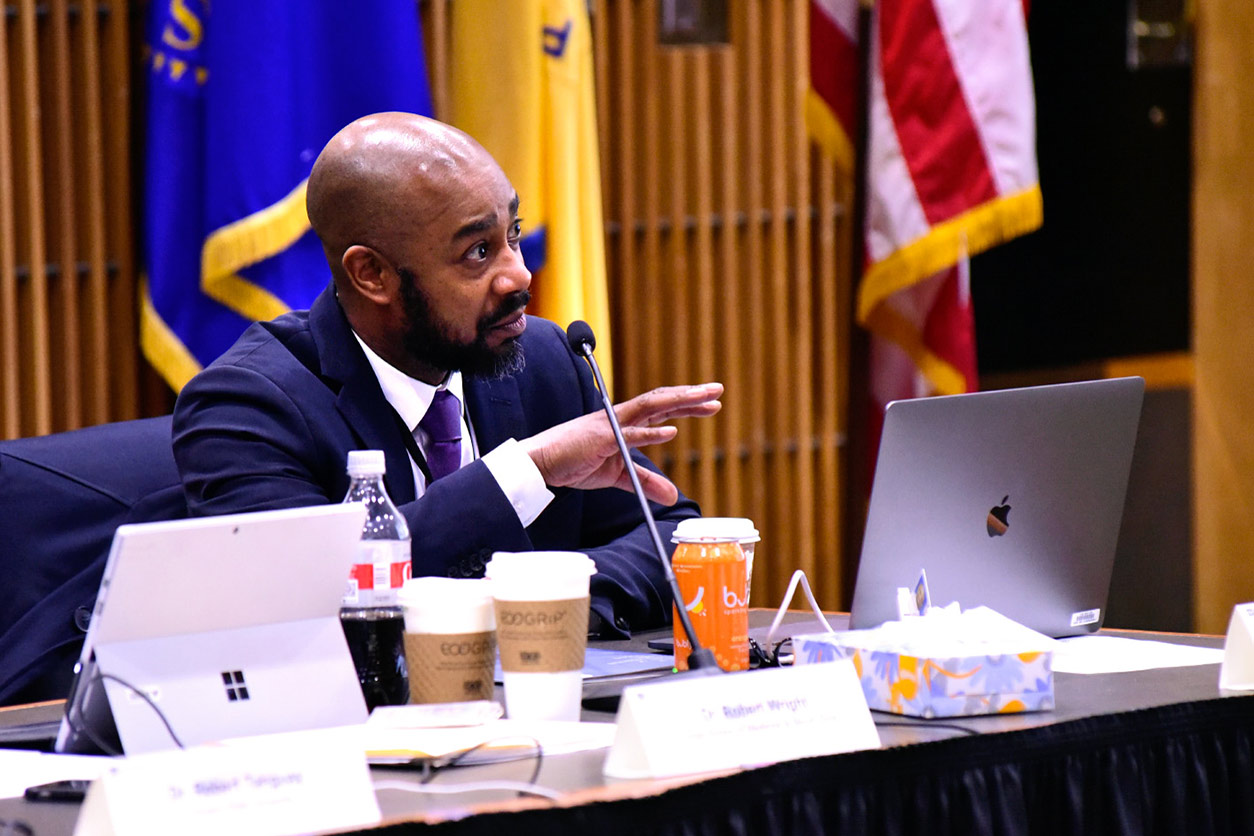 Ex officio council member Gary Ellison, Ph.D., from the National Cancer Institute, asked Gray about how the children’s centers work to empower and engage children. (Photo courtesy of Steve McCaw)
Ex officio council member Gary Ellison, Ph.D., from the National Cancer Institute, asked Gray about how the children’s centers work to empower and engage children. (Photo courtesy of Steve McCaw)Council member Jose Cordero, M.D., from the University of Georgia, had high praise for the centers. “It’s really remarkable what an organized set of centers can actually do, and the impact that it’s having from basic research to translation is really tremendous,” he said.
Council member Brenda Eskenazi, Ph.D., from the University of California, Berkeley, runs one of the oldest centers and is especially proud of the program’s community outreach component.
“What the children’s centers provide is funding to do community outreach, and that is a real strength of the centers,” she said. “I hope their future endeavors will continue to have really strong community outreach components.”
The next NAEHSC meeting is scheduled for June 4-5.
(Ernie Hood is a contract writer for the NIEHS Office of Communications and Public Liaison.)





